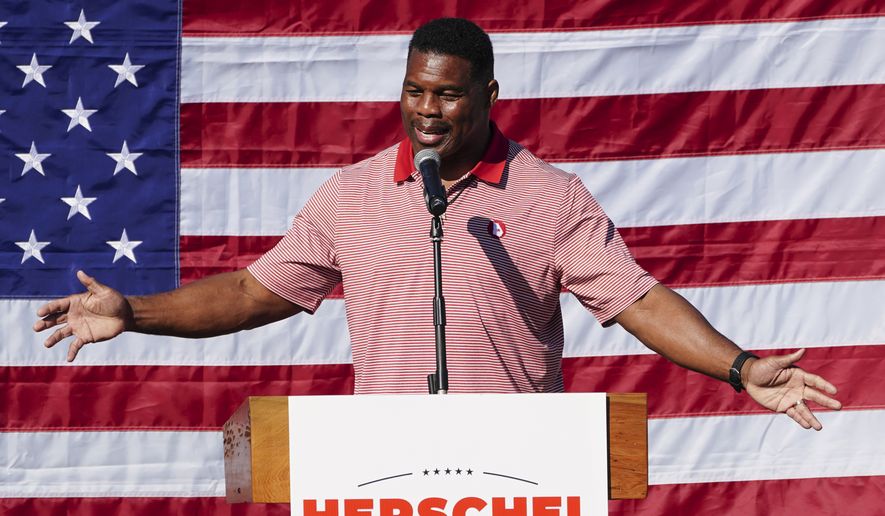Voters can expect to see a final barrage of political ads ahead of Nov. 8, with both parties pouring millions into eleventh-hour messaging campaigns.
Republicans have largely stuck to their themes of rising crime, inflation, and tying Democrats to unpopular President Biden. Democrats have hammered the GOP on abortion, defunding the social safety net, and undermining democracy.
“If Republicans win the House in the midterms, the Freedom Caucus wants more power than they’ve ever had,” said a TikTok video by the House Democrats’ campaign arm. “Take [Rep.] Scott Perry [of Pennsylvania] for example. He tried to overturn the results of the 2020 election and he is now lobbying to be chairman of the Homeland Security Committee. The same with [Rep.] Jim Jordan [of Ohio]. The ultra-MAGA nutjob is in line to chair the House Judiciary Committee.”
An ad by the National Republican Campaign Committee portrays Democratic Rep. Vicente Gonzalez, who will face GOP Rep. Mayra Flores in a clash of incumbents in South Texas, as a dangerous individual who betrayed the country.
“What kind of man makes millions as a lawyer representing a cartel that terrorized our communities? What kind of man is OK with defunding the police who protect us from his dangerous clients? What kind of man calls his opponent, Mayra Flores, unqualified to be in Congress because she’s an immigrant from Mexico?” the ad said.
But, with over 16 million ballots already cast, the effectiveness of the ads to sway the relatively small number of independent and undecided voters remaining may not be as strong as the parties hope.
“Messaging of any kind has rather limited effects. It could be consequential in very close races around the edges, but political advertisements in general are not very effective because things like partisanship, the state of the economy, perceptions of political leaders — those things are much more consequential,” said Costas Panagopoulos, political science professor at Northeastern University.
Despite the possibility of making little impact, parties are pouring a record high amount of spending in advertising and campaign messaging this cycle.
The House GOP’s campaign arm has dropped $65 million on independent expenditures across the cycle, with plans to spend millions of more dollars before Election Day on Nov. 8.
The Democratic Congressional Campaign Committee did not respond to an inquiry about their spending figures, but has been devoting six figures on single ad buys in various House races.
The committee put $605,000 on a TV attack ad last week to help its chief, New York Rep. Sean Patrick Maloney. Mr. Maloney is facing New York Assemblyman Michael Lawler as his GOP opponent.
The DCCC has also outpaced its Republican counterpart on fundraising, bringing in $56.5 million between July and September.
In September alone, the committee received $26.5 million, including $14 million in donations of $200 or less. The NRCC, by comparison, raised $16.9 million in the same month.
But notable in this cycle is the increased input from outside spending groups, particularly among Republicans who fall short of Democratic fundraising efforts.
“There’s a lot of outside group activity in this election cycle more than we’ve ever seen. A lot of that is happening on the Republican side,” said Erika Franklin Fowler, who leads the Wesleyan Media Project, which tracks political advertising.
Outside political groups have dumped over $1.4 billion into the 2022 cycle, compared with $912 million by the same point in the 2018 midterms.
Conservative super PACs have led with $624 million to help Republicans and target Democrats, compared with $496 million of outside spending from liberal groups, according to data compiled by OpenSecrets.
The so-called “dark money” groups can raise and spend unlimited sums of money from mega-wealthy donors.
The Congressional Leadership Fund, a super PAC aligned with GOP Leader Kevin McCarthy, has spent over $210 million on ads this cycle.
Just this week, CLF announced $11 million in new ad reservations in 16 districts, including seven that Mr. Biden won by double digits.
The Senate Leadership Fund, aligned with Senate Minority Leader Mitch McConnell, has spent $180 million on independent expenditures to boost Republican Senate candidates, compared with $110 million by Senate Majority Leader Charles E. Schumer’s Senate Majority PAC.
The ad spending has heavily targeted battleground states and sought to shore up vulnerable members by attacking their opponents.
In Georgia, Mr. McConnell’s PAC is projected to spend more than $38 million between Labor Day and Election Day to help Republican Herschel Walker against Sen. Raphael G. Warnock.
Meanwhile, Georgia Honor, aligned with Democrats, will spend $30.2 million in the same stretch to boost Mr. Warnock.
Last week, Mr. McConnell’s PAC put in an additional $6 million into the Pennsylvania Senate race, attacking Democrat John Fetterman in favor of Mehmet Oz, the GOP nominee.
Between outside groups and candidate money, Republicans have spent over $140 million on the Pennsylvania race, while Democrats have spent about $100 million on TV ads.
In House races, Planned Parenthood’s campaign arm provided an additional $2 million for a digital ad campaign this month focused on abortion. The effort seeks to help 11 vulnerable Democrats.
The ads target California Reps. David Valadao, Mike Garcia, and Michelle Steel, as well as Yvette Herrell of New Mexico, Steve Chabot of Ohio, and Ted Budd of North Carolina, who is running for Senate.
“David Valadao wants politicians to control your health, and now that Roe v. Wade is gone, there’s a bill before Congress to ban abortion nationwide,” one ad says. “One in three women already live in states with abortion bans where patients face confusion and doctors face jail time, where people no longer have control over their reproductive health.”
The ads warn voters of a national abortion ban, on top of a birth control ban in Congress, if Republicans take power.
• Mica Soellner can be reached at msoellner@washingtontimes.com.




Please read our comment policy before commenting.